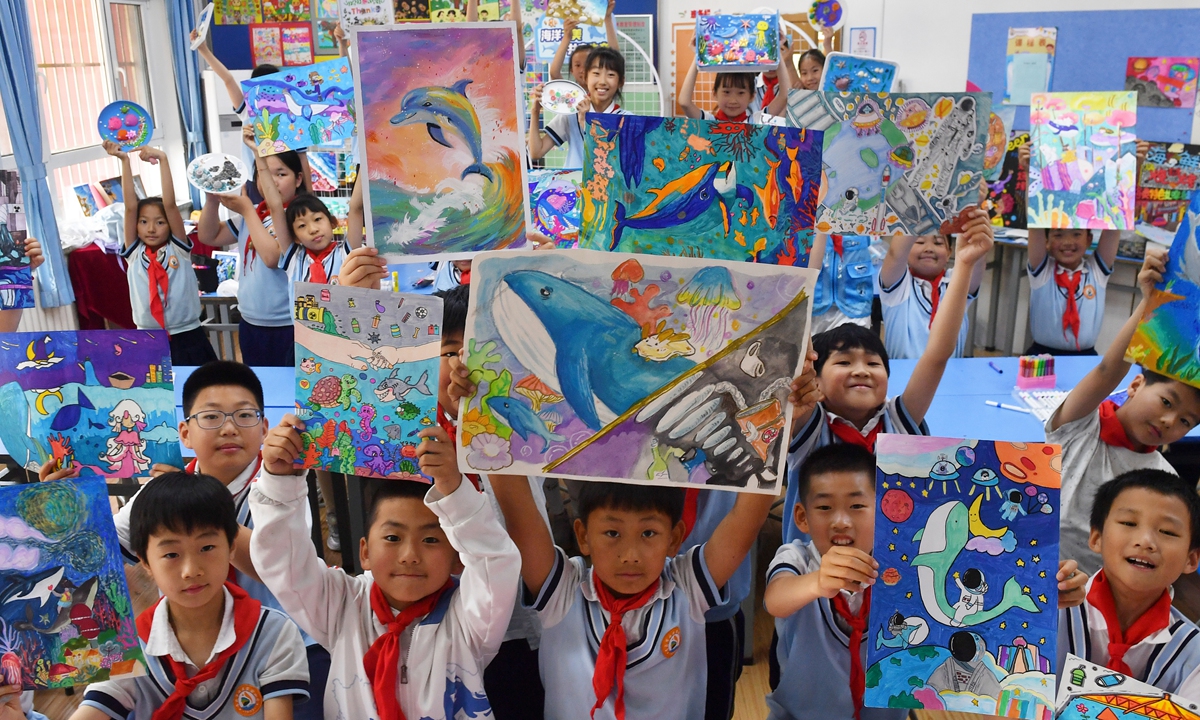
Students at a primary school in Qingdao, East China's Shandong Province, show the drawings of underwater world they imagined during an event to celebrate the World Oceans Day held on June 7, 2024. Photo: VCG
China's maritime industry has entered its best period of development in history, according to Sun Shuxian, vice minister of natural resources and head of the State Oceanic Administration. The statement was made at a ceremony marking World Oceans Day in Xiamen, East China's Fujian Province, on June 8.
This was the 16th World Oceans Day and China's 17th National Ocean Promotion Day.
Located in the eastern part of the Asian continent and on the west side of the Pacific Ocean, China has jurisdiction over maritime areas spanning temperate, subtropical, and tropical climate zones.
As a significant maritime nation, China's marine territory covers an area of 3 million square kilometers, making the country an important habitat for rare and endangered species such as spotted seals in the Western Pacific, Chinese white dolphins, and Bryde's whales, as well as a key area along the East Asia-Australasia flyway for migratory birds. This means the country plays an important role in maintaining the global marine ecological balance.
At the June 8 ceremony, the Chinese Ministry of Natural Resources released a monitoring report which shows that the current overall condition of China's marine ecology remains stable, with some local areas seeing improvements and degradation of typical ecosystems being slowly curbed.
China's coral reefs, seagrass beds, coastal salt marshes, and mangrove ecosystems are in good condition. Among them, coral reefs are widely distributed in the waters south of Dongshan, Fujian, with the widest distribution in the waters around Hainan Island. China's reef-building coral species account for 40 percent of the total number of species discovered worldwide, with nearly 600 species of coral reef fish. In 2023, the live coral coverage in various monitoring areas had increased from 2020, and the overall structure of the biological community remained stable. However, in some areas, coral bleaching occurred due to the warming of seawater, according to the report.
The Ministry of Natural Resources also released the first marine data open-sharing catalog and the country's first national marine big data service platform, Marine Cloud, on June 8.
The catalog is a compilation and integration of marine data independently obtained by China, independently developed marine information products, and global marine environmental data. The content of the catalog includes seven major marine sciences and 83 categories of elements. Marine Cloud is based on marine big data from national marine observation and investigation and makes full use of advanced information technologies such as big data, cloud computing, blockchain, and the internet to achieve on-chain services for data and model methods.
The launch and operation of the catalog and the Marine Cloud will provide scientific and authoritative marine data services to the public, effectively promote the digital transformation of the marine industry, and innovate new ideas and models for the interconnection, integration, and intelligent application of marine information, ministry officials said at the ceremony.
To better protect the marine environment, on June 7, one day before World Ocean Day, relevant Chinese authorities jointly launched a three-year marine garbage cleaning operation in 65 bays adjacent to urban areas in coastal cities across the country. According to media reports, the action is targeting the "timely and effective cleaning of beach garbage in 65 bays by 2025," and reaching a clean level on a regular basis by 2027 Additionally, it aims to achieve a significant reduction in floating garbage density on the sea surface by 2025.
The Ministry of Natural Resources also confirmed on June 8 that China's marine economy has maintained steady and rapid development this year. Traditional industries are improving, and the three major indicators of the marine shipbuilding industry rank first in global market share.
In the first four months of this year, China's marine energy supply capacity continued to increase, with offshore wind power generation up by 27.1 percent year-on-year. The first megawatt-level tidal energy generator Fenjin has generated over 3.5 million kilowatt-hours since being connected to the grid, providing valuable engineering experience for the large-scale development and utilization of tidal energy in China.
Additionally, China's traditional marine industries continue to improve. Marine freight volume and cargo turnover volume in the first four months of 2024 increased by 6.5 percent and 7.5 percent year-on-year, respectively. At the same time, China's emerging marine technologies and projects are accelerating, and the role of seawater desalination in the coastal water supply guarantee system has been further enhanced.
China has also implemented a strict fishing moratorium system to protect marine resources. In the lead-up to the Sanfu period, the dog days of summer in the traditional Chinese calendar, key sea areas in China, including the Bohai Sea, Yellow Sea, East China Sea, and the waters north of 12 degrees north latitude in the South China Sea (including the Beibu Gulf), have entered a comprehensive fishing moratorium period starting from May 1. Nearly 120,000 marine fishing vessels and fishing support vessels nationwide have returned to port for the moratorium.
To promote the high-quality development of marine fisheries and effectively protect marine fishery resources, relevant Chinese authorities, including the Ministry of Agriculture and Rural Affairs, the Ministry of Public Security, and the China Coast Guard, have also kicked off nationwide special law-enforcement actions for the marine fishing moratorium from May 1 to September 16 to ensure the implementation of the marine fishing moratorium system.
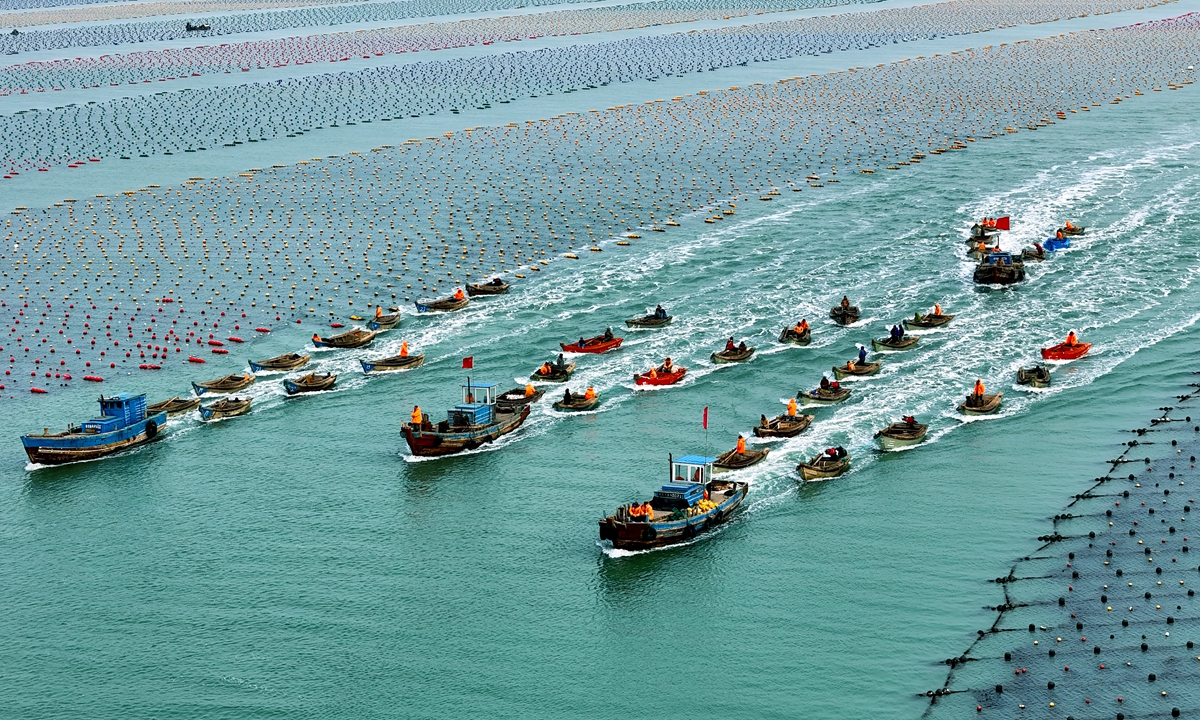
Fishermen work at a marine ranch in Ailun Bay in Rongcheng, East China's Shandong Province, on March 18, 2024. Photo: VCG
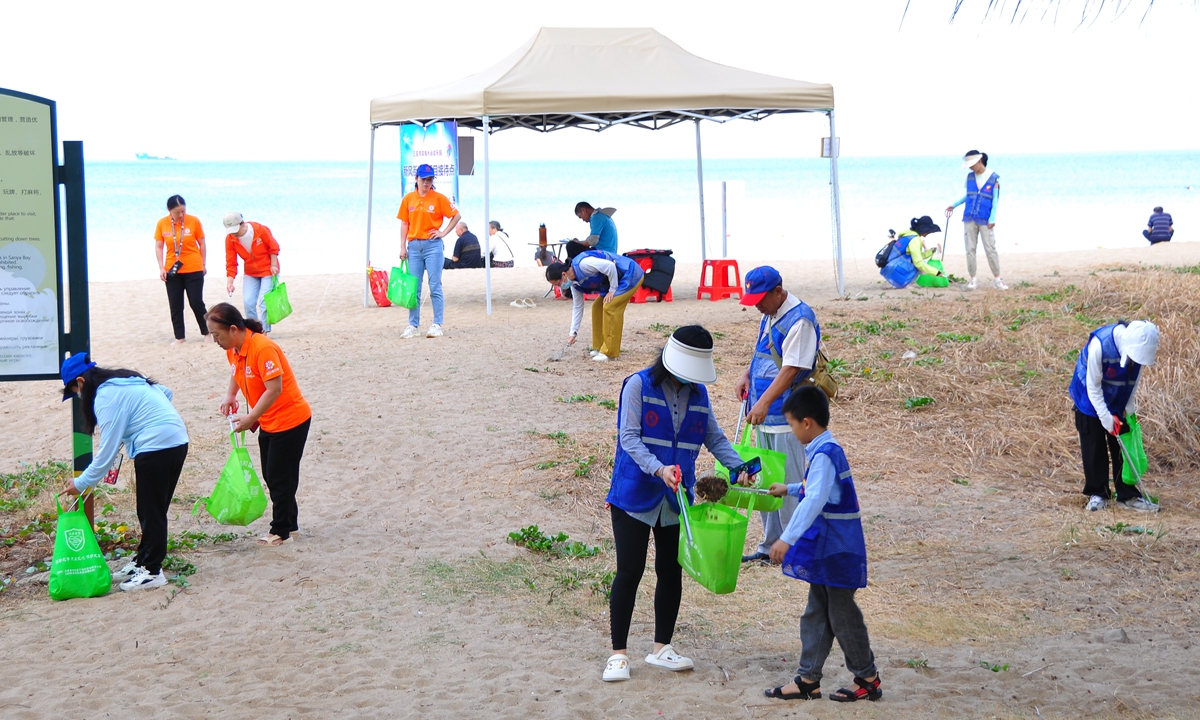
Volunteers pick up trash on the beach of Sanya Bay of Sanya, South China's Hainan Province, on March 17, 2024. Photo: VCG
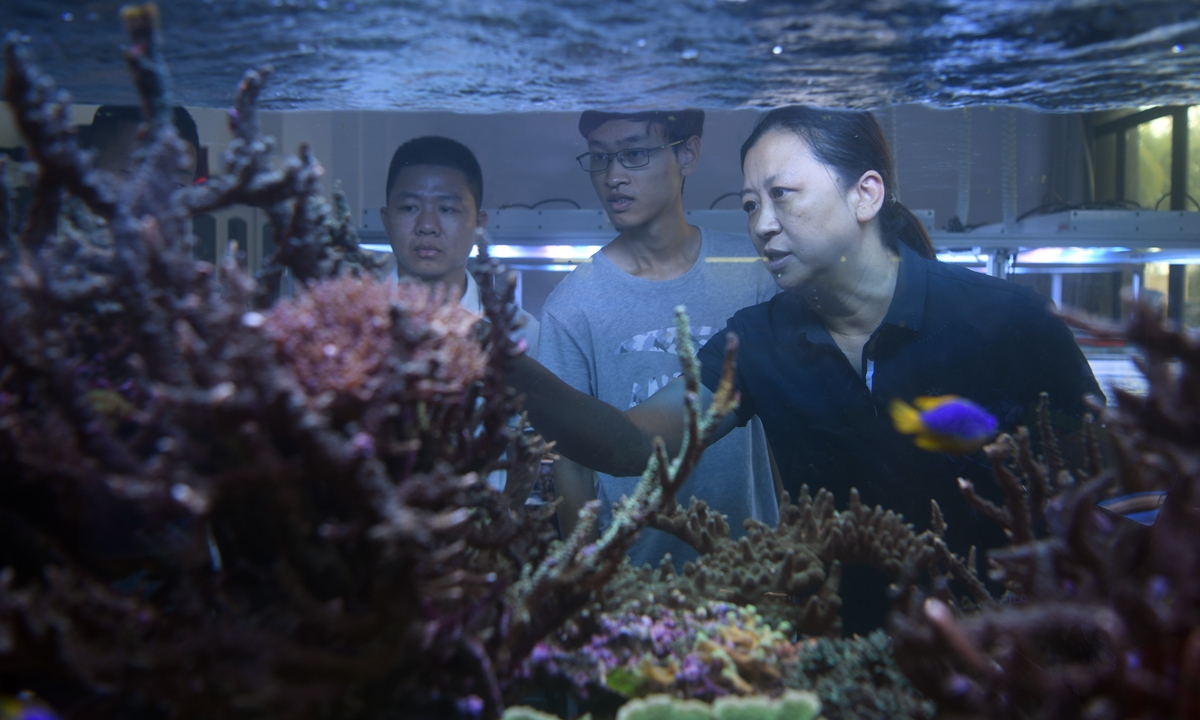
Chinese coral biologist Huang Hui and her students examine coral specimen on November 4, 2021, at a laboratory in Guangzhou, South China's Guangdong Province. Photo: VCG
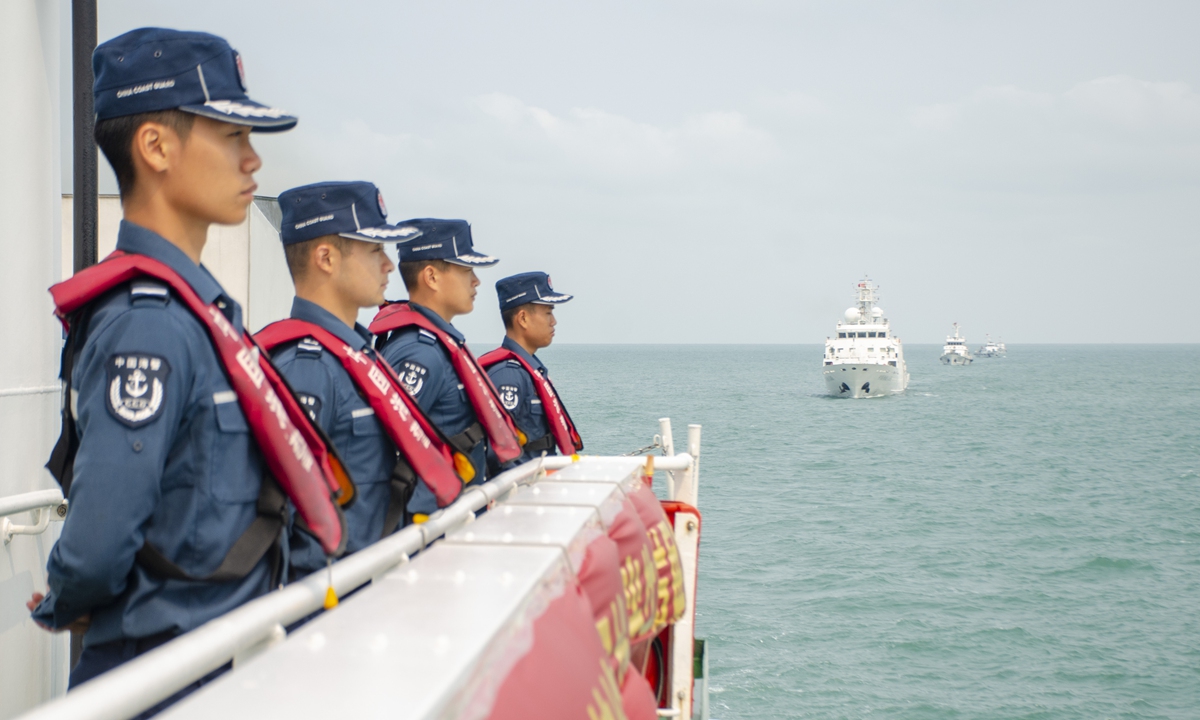
Fishermen work at a marine ranch in Ailun Bay in Rongcheng, East China's Shandong Province, on March 18, 2024. Photo: VCG
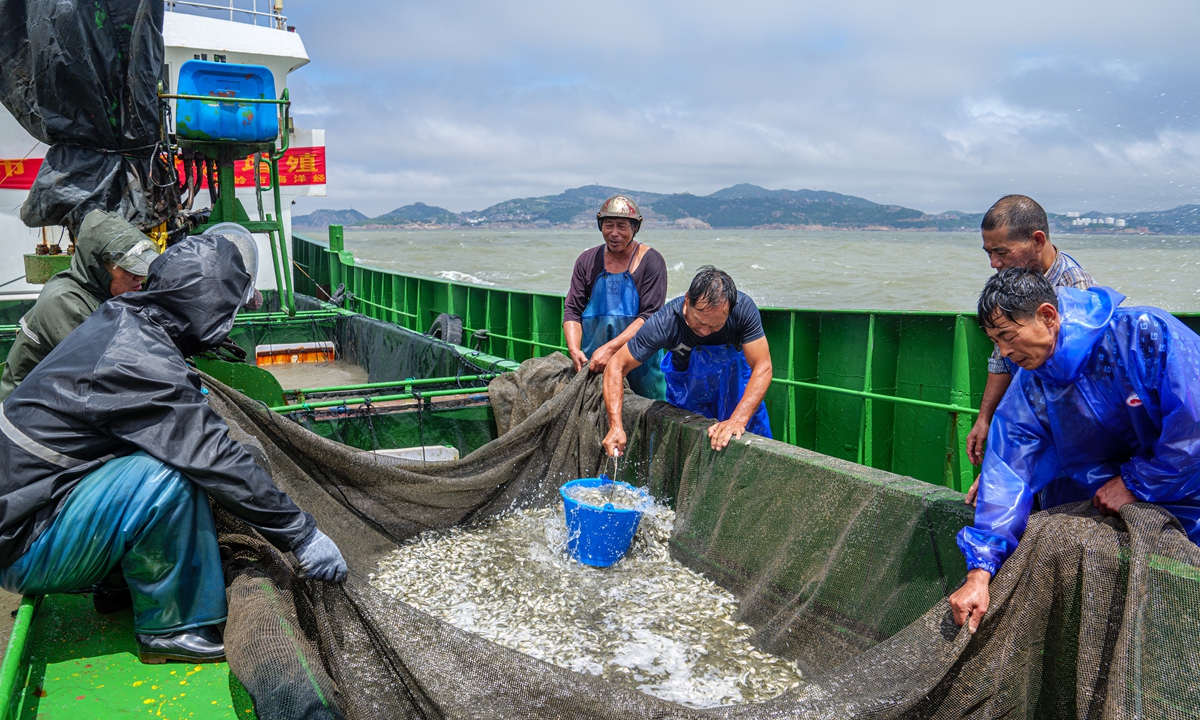
Fishermen and officers from local fishery and environmental protection departments in Wenling, East China's Zhejiang Province, release fish fry into local nearshore areas on June 7, 2024. Photo: VCG



